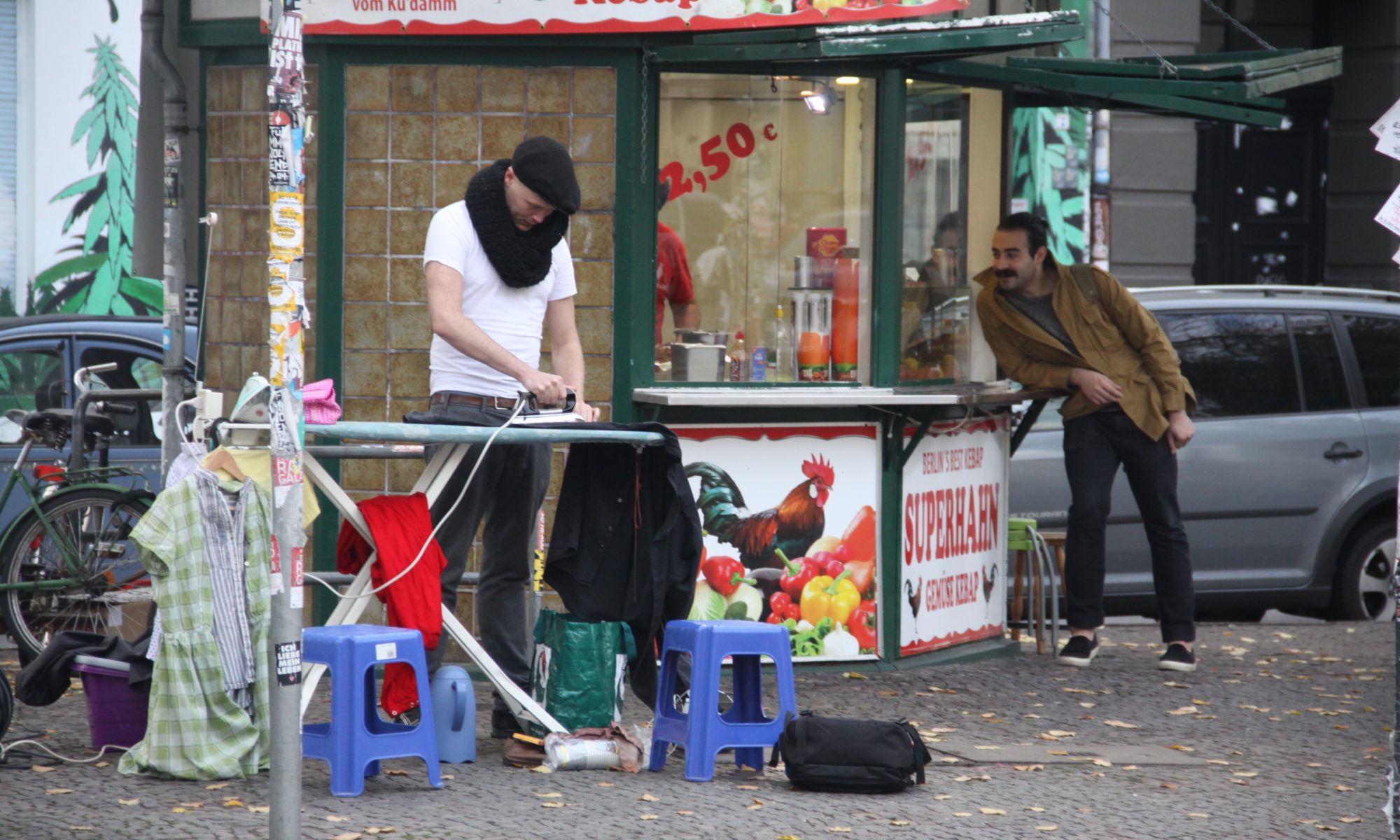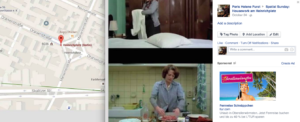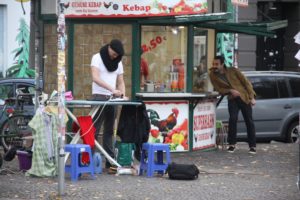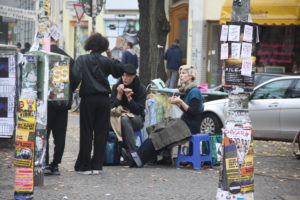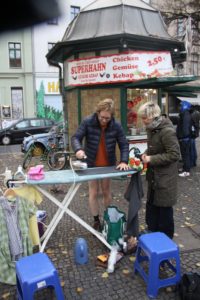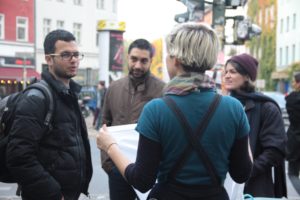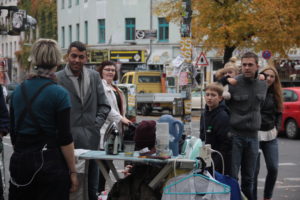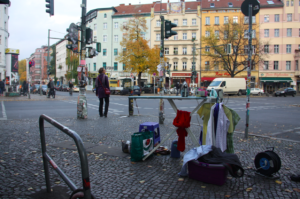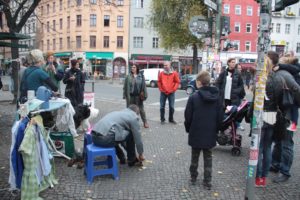Berlin, Sunday 24 October
I picked up my most solitary, tedious, least-favorite housework – ironing, shining shoes, sewing up holes – and took it downstairs to the corner. I set it up next to the Kebab stand (which also provided electricity), provided some stools and tea, and spent three hours doing “housework” outside.
This displaced housework from the private, domestic, unseen location of my apartment to the very public street corner on the end of my block. Anyone, everyone was welcome to join. But most people simply wanted to know what I was doing.
“Doing housework,” I said. I enjoyed being outside, I did not enjoy housework, I decided to take it outside and have a nice Sunday. Strange, perhaps, but nobody could disagree.
Also, I said, I wanted to remove an act of labor from its domestic location and place it in a public location, because domestic labor is real labor. The absurdity of an ironing board next to a kebab stand mitigated the provocative discussions which followed concerning roles of women at home and in public, the neighborhood’s changing demographic and ethnic makeup, Germany’s birthrate decline, migration and refugees, job scarcity, apps for housework helpers, etc.
The image representing the project’s Facebook event is a screenshot from Chantal Akerman’s 1975 film, Jean Dielman, 23 quai du Commerce, 1080 Bruxelles. Ackerman had recently passed away, so in thinking about displacing housework I thought of her, and of the relationships between documentation and action, location and publication.
Social practice and art in public space often reaches a wider audience through its documentation than through its happening.
Ackerman elevated housework done alone, unseen, at home, to a spectacle in the sense of the silver screen. She displaced domestic labor from the home by making a film about it, while I did something similar to do it and only had someone document it so I could talk about it here.
I saw people photographing the housework stand. Many people contacted me about the Facebook event. Someone wanted me to come talk about the project at a Jean Dielman screening. But most people who actually saw it were “participants” I never met and who only saw someone doing something out of the ordinary. I talked about this with those who stayed to talk, iron, or sew. Some asked if I was an artist. Most didn’t. I tried not to talk about art, or invoke this as an art project.
Many people stopped for a few seconds, or simply examined the scene or walked more slowly as they passed. Others (few, but enough to note) scowled or frowned in disapproval – I have no way of knowing if this was because I was doing something strange as another ostensible white/hipster/quirk/gentrifier in my neighborhood of embattled working-class, majority Turkish-Germans, or an affront to the private sanctity of the domestic realm.
I offered participation to many people – most declined, though happily and graciously, expressing their preference to observe. I did teach one man how to iron a crease into his pants, and someone else how to sew a button back on. I also burnt a shirt because I left the iron on it while I was talking.

